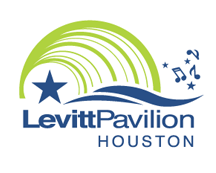Levitt Pavilion Houston in the Making
Levitt Pavilion Houston will open soon in the city's Willow Waterhole Conservation Reserve, a 280-acre park that serves an important dual function: reducing flood damage through a series of interconnected lakes that function as stormwater detention basins and providing the public with much needed green space.
Located in a section of Houston's Westbury neighborhood, at one time Willow Waterhole contained contaminated brownfields and abandoned buildings due to years of flood damage. In 2000, Willow Waterhole became a significant component of Project Brays, a $450 million effort for flood control improvements following a series of catastrophic floods in Houston during the 1980s-90s. $75 million was allocated to Willow Waterhole to create infrastructure for flood damage reduction. Recognizing Willow Waterhole's potential to be more than just a flood control zone, local citizens banded together in 2001 to create the nonprofit Willow Waterhole Greenspace Conservancy. They envisioned Willow Waterhole as a major new park that could revitalize the area as well as create expansive green space and provide recreational amenities.
Since opening in 2006, Willow Waterhole has become a popular destination for bird watching, picnicking, and hiking on its numerous walking trails. It has also hosted activities like an annual jazz festival and outdoor movie screenings. Seeking to fully realize the park's potential as a citywide destination, in 2012 Conservancy leaders contacted the Mortimer & Mimi Levitt Foundation in the hopes of bringing the Levitt program to Houston. In 2013, Willow Waterhole was formally announced as the site of the eighth Levitt Pavilion. When the sustainably designed, state-of-the-art venue opens at water's edge, it will accommodate up to 5,000 nightly concertgoers and promises to become a beloved place for all Houstonians.
